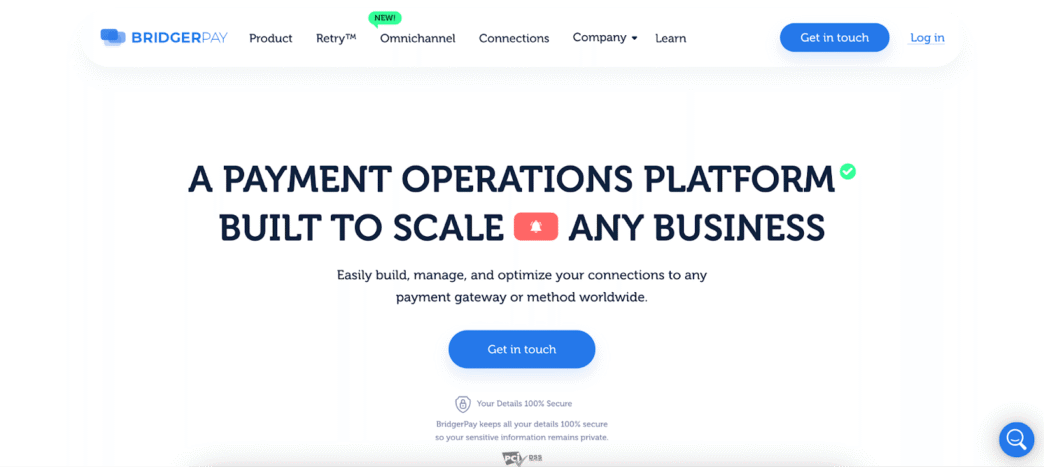Checkout is no longer the end of the customer journey, but rather the final battleground. And as The Street recently highlighted, BridgerPay is emerging as the quiet force helping merchants win that battle.
From card declines and cart abandonment to clunky integrations that take weeks to roll out, payments have become a bottleneck for digital growth. BridgerPay’s orchestration layer, a system that simplifies and automates the complex decision-making process behind each transaction, provides a straightforward solution to this complexity: a single connection that intelligently routes every transaction, instantly connects to hundreds of providers, and dynamically adjusts in real-time to meet the demands of today’s fragmented global economy.
Why Orchestration Isn’t Optional Anymore
Behind every successful transaction is a decision tree: which gateway to use, how to optimize for local regulations, and what fallback logic to trigger if something fails. Until recently, merchants had to build that intelligence manually, juggling multiple payment service providers (PSPs), managing integration chaos, and hoping for the best.
Not anymore.
According to Global Market Insights and Market.us, the payment orchestration platform market is growing from $1.2 billion in 2023 to a projected $10.3 billion by 2033. The Street makes it clear: payment orchestration is not a strategic advantage.
Platforms like BridgerPay enable merchants to add new payment methods in minutes, rather than months. Whether it’s Pix in Brazil, GCash in the Philippines, or stablecoins in blockchain-savvy markets, BridgerPay abstracts the complexity behind a drag-and-drop interface and a single API. In turn, merchants can scale faster, adapt instantly, and deliver frictionless experiences without reengineering their stacks.
Turning Declines Into Dollars
One of BridgerPay’s biggest breakthroughs is its real-time transaction rescue engine, Bridger Retry™. Since launched in 2019, has recovered over $190 million in lost revenue by automatically re-routing failed transactions through alternate providers. In markets like Asia, that’s translated to a 20% increase in successful payments. The bump is smaller in Europe and North America, but still substantial at 6% and 3.8%, respectively.
Those may sound like minor improvements, but they’re not, especially in high-volume environments. Even a 1% increase in authorization rates can translate into millions of dollars in recovered revenue. BridgerPay turns what used to be a technical dead-end into a revenue engine.
Beyond Routing: Strategic Optimization in Real Time
But BridgerPay isn’t just about saving failed payments. Its orchestration logic also prioritizes cost-efficiency and uptime. The system can automatically select the best provider based on location, transaction size, risk profile, and even real-time performance data. That means a high-ticker order in the U.S. might go through a low-fee processor, while a smaller transaction in Brazil routes through a local acquirer to improve success rates.
This level of routing intelligence used to require deep engineering resources and custom development. With BridgerPay, it’s handled by the platform without requiring any code.
And the intelligence doesn’t stop at checkout. BridgerPay offers a centralized dashboard where merchants can monitor approval rates, analyze provider performance, and fine-tune their payment stack based on real-time insights. It turns payment infrastructure into a live control panel for revenue optimization.
Built for a Fragmented World
Checkout preferences are changing fast. It’s not just happening across countries, but also across generations. Mobile wallets, instant bank transfers, QR payments, and even tokenized crypto options are becoming table stakes in different regions. In the Netherlands, iDEAL remains the dominant payment method. In the Philippines, GCash and Maya are essential financial services.
Then there’s the rise of stablecoins, which hit $27.6 trillion in transfers in 2024, more than Visa and Mastercard combined, according to the World Economic Forum. Even if merchants aren’t ready to accept cryptocurrency, their infrastructure needs to be, and BridgerPay’s architecture ensures it is.
This flexibility future-proofs businesses. As central bank digital currencies and blockchain-native rails inch closer to mainstream adoption, BridgerPay allows merchants to support them on demand, without overhauling their systems or placing risky bets.
The Infrastructure Behind Every Successful Checkout
The Street doesn’t hype trends lightly. Its spotlight on BridgerPay speaks to a larger truth that payment orchestration has become the quiet backbone of global commerce.
BridgerPay focuses on what matters most: transaction success, cost optimization, uptime, and adaptability. That silent infrastructure is becoming one of the most powerful levers for growth. It ensures merchants are never caught off guard, no matter the country, currency, or customer behavior. That’s why The Street is bullish, and why more merchants are beginning to pay closer attention to what’s happening under the hood.














